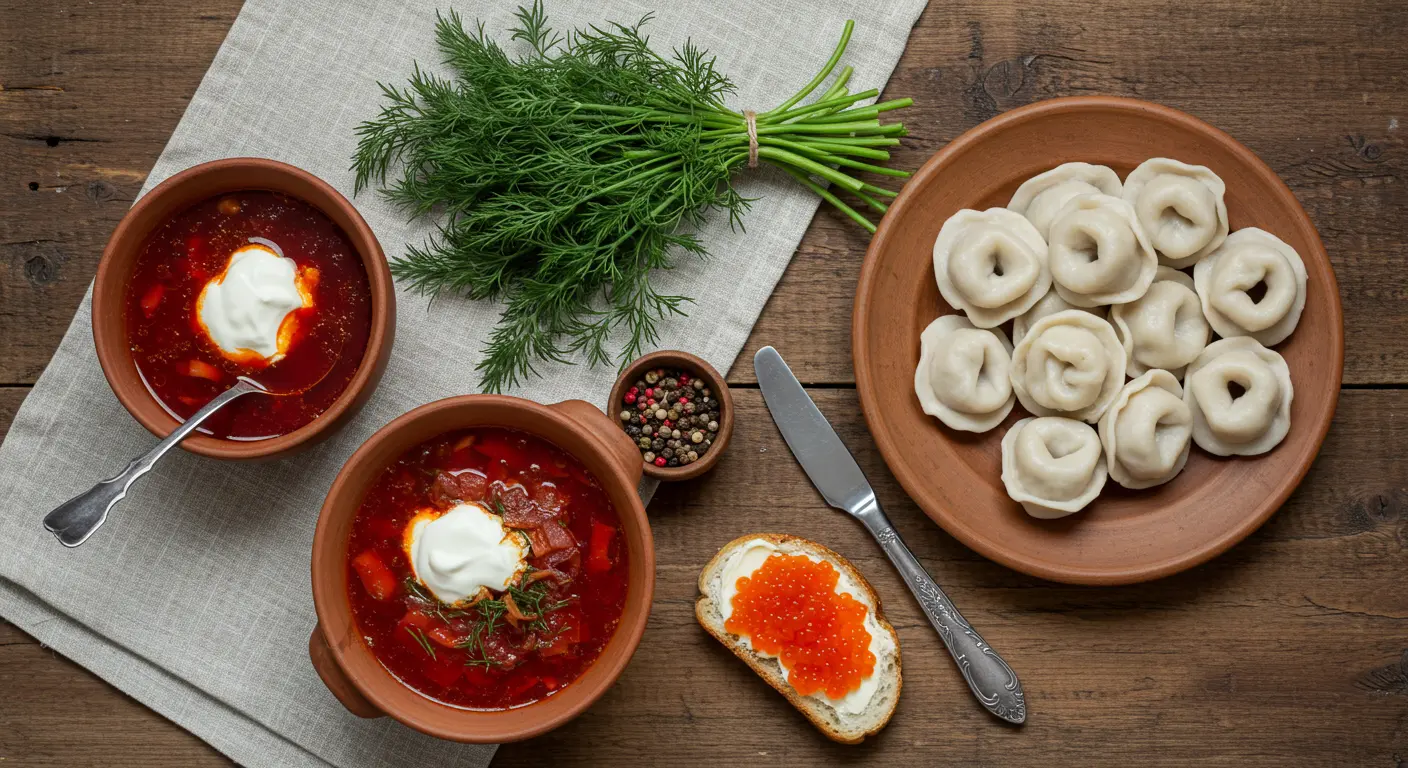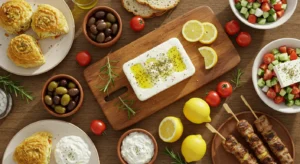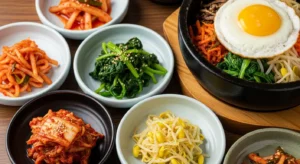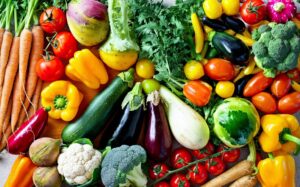Table of Contents
A Beginner’s Feast: Unlocking the Hearty, Surprising World of Russian Food
Let’s be honest. When you think of Russian food, what comes to mind? Maybe a bowl of red soup, a hearty dollop of sour cream, and perhaps a stiff shot of vodka. It’s a common starting point, but let me tell you, you’re barely scratching the surface.
Russian cuisine is a hidden giant in the world of culinary traditions. It’s a story of survival, celebration, and soul, shaped by long, harsh winters and a history of cultural exchange along the great Silk Road. This isn’t just food; it’s edible history designed to warm you from the inside out.
If you’re a curious foodie feeling a little intimidated, you’ve come to the right place. Forget the stereotypes. We’re about to embark on a flavorful journey through the comforting, complex, and utterly delicious world of Russian cooking. By the end of this, you’ll be ready to seek out a local Russian restaurant or, even better, brave making your own pelmeni.
So, What Is Russian Cuisine, Anyway?
Before we dive into specific dishes, it helps to understand the why behind the food. Russian cooking is, at its core, pragmatic and generous.
Imagine for a moment a six-month winter. Your ancestors needed meals that were calorie-dense, preserved well, and could be cooked in a single pot hanging in the hearth. This is why you’ll find a heavy reliance on root vegetables (beets, potatoes, carrots), hardy grains (rye, buckwheat), and preserved foods like pickles and smoked meats.
But it’s not all about survival. The Russian table, or stol, is a central symbol of hospitality. The word for “hospitality” in Russian—gostepriimstvo—literally shares a root with “guest” (gost). Offering a guest a meager meal was considered a deep disgrace. This cultural cornerstone gives rise to the lavish spreads and multi-course feasts, especially during celebrations.
The Unforgettable Staples: Your Russian Food Starter Pack
These are the dishes that form the bedrock of the cuisine. You can’t claim to know Russian food without meeting these icons.
1. The Soups: More Than a Starter
In Russia, soup (sup) isn’t just an appetizer; it’s often the main event.
- Borscht: Okay, we have to start here, but let’s give it its due respect. This vibrant, ruby-red beet soup is the undisputed king. But here’s an insider’s tip: not all borscht is the same. Ukrainian in origin but deeply adopted, it has countless regional variations. Some are clear and brothy, others are thick and hearty, packed with cabbage, potatoes, and beef. The mandatory garnish? A giant spoonful of cool sour cream (smetana) and a sprinkle of fresh dill. The contrast of hot and cold, sweet and sour, is pure magic.
- Shchi: If borscht is the king, shchi is the ancient queen. This is a cabbage soup, often made with a sour tang by using fermented cabbage (kislaya kapusta). It’s simpler than borscht but has a profound, comforting depth of flavor. For centuries, it was the most common soup in the Russian peasant diet.
- Solyanka: Feeling adventurous? Meet solyanka, the “hunter’s soup.” This is a thick, piquant soup bursting with a mix of different meats, sausages, and briny ingredients like olives, capers, and pickles. It’s salty, sour, and incredibly robust—often hailed as the ultimate hangover cure.
2. The Dumplings: Pocketfuls of Comfort
Every culture has its dumpling, and Russia is no exception.
- Pelmeni: These are the Russian answer to potstickers or ravioli. Little pockets of thin dough are stuffed with a simple mixture of minced meat (pork, beef, or lamb) and onions, then boiled and served swimming in butter or broth. They are the definition of simple, satisfying comfort food. Families often make hundreds at a time and freeze them for a quick meal.
- Vareniki: Often confused with pelmeni, vareniki are their Ukrainian cousins, typically filled with vegetarian ingredients. Think mashed potatoes with caramelized onions (varenyky s kartoshkoy), sweet farmer’s cheese, or even sour cherries for a sweet version dusted with sugar.
3. The Salads: A Festive Affair
Russian salads are a different beast from the light, leafy greens you might be used to. They are dense, layered, and meant for special occasions.
- Salat Olivye: This is the centerpiece of every New Year’s table. Diced boiled potatoes, carrots, eggs, pickles, peas, and bologna or chicken are bound together in a creamy mayonnaise blanket. It’s rich, it’s indulgent, and it’s absolutely irresistible.
- Seledka Pod Shuboy: Translated as “Herring under a Fur Coat,” this salad is a sight to behold. Layers of salted herring, diced onions, boiled potatoes, carrots, and beets are stacked and smothered in mayonnaise. The result is a stunning purple-hued dish with a complex mix of salty, sweet, and earthy flavors.
The Supporting Cast: Bread, Pancakes, and Spreads
- Khleb (Bread): In Russia, bread is sacred. It’s always on the table, and wasting it is a sin. While white bread is common, the true star is Borodinsky Bread, a dark, slightly sweet rye bread flavored with coriander. Its unique flavor is a perfect pairing with…
- Ikra (Caviar): Yes, it’s a real thing, not just a movie trope! While the expensive black sturgeon caviar is for the elite, red salmon caviar (ikra) is much more accessible and a beloved treat. The classic way to eat it? Spread cold butter on a piece of white bread, top with a layer of glistening red caviar, and enjoy the pop of salty, briny flavor.
- Blini: These are not just pancakes; they are a cultural phenomenon. Thin, crepe-like, and yeast-leavened, blini are incredibly versatile. They can be rolled with savory fillings like minced meat or mushrooms, or served sweet with jam, honey, or that same red caviar. During Maslenitsa, the festival before Lent, they are eaten in massive quantities as a symbol of the sun.
Bringing Russian Food to Your Kitchen: A Beginner’s Project
Feeling inspired? The best way to understand a cuisine is to cook it. I’d suggest starting with Pelmeni. It’s a fun, hands-on process, especially if you have a helper.
You’ll need a simple dough (flour, water, egg, salt) and a filling of equal parts ground pork and beef with finely minced onion, salt, and pepper. Roll the dough thin, cut out circles, place a small ball of filling in the center, and fold them into little moons, pinching the edges shut.
Boil them in salted water for 5-7 minutes until they float. Serve with a mountain of sour cream, a sprinkle of dill, and a dash of vinegar. The sense of accomplishment when you bite into a homemade pelmen is unmatched. It’s a direct connection to generations of Russian home cooks.
Frequently Asked Questions (FAQs)
Q: Is Russian food always so heavy and starchy?
A: That’s a fair question! Traditionally, yes, it leans hearty to provide energy and warmth. However, modern Russian cuisine is evolving, with chefs creating lighter, refined versions of classics. Furthermore, the summer brings an abundance of fresh berries, mushrooms, and vegetables straight from the dacha (country house) gardens.
Q: I’m a vegetarian. Is there anything for me to eat?
A: Absolutely! While many classic dishes feature meat or fish, Russian cuisine has a strong vegetarian tradition rooted in the Orthodox Church’s fasting periods. You have vareniki with potato or cheese, gribnoy sup (mushroom soup), all kinds of pickled vegetables, and buckwheat (grechka) as a fantastic side dish.
Q: What’s the deal with vodka? Do I have to drink it with the meal?
A: Vodka is culturally significant, often consumed during toasts at celebrations. But no, you don’t have to drink it! Kvass, a fermented low-alcohol beverage made from rye bread, is a wonderfully refreshing and non-alcoholic traditional drink. Kompot, a sweet fruit drink, is also a family staple.
Q: What’s one Russian dish I should absolutely try first at a restaurant?
A: Start with a trio: Borscht to understand the soul, Pelmeni for comfort, and Beef Stroganoff (tender beef in a creamy mushroom sauce) for a taste of the imperial, refined side of the cuisine. That’s a perfect introduction.
The Final Ladle
Russian food may not be the trendiest cuisine on the block, but its staying power is a testament to its profound ability to comfort and nourish. It’s a cuisine built on necessity but elevated by generosity. It’s the warmth of the soup pot against the winter chill, the joy of a shared dumpling, and the vibrant color of a beetroot field in a summer sunset.
So, take a chance. Explore your local Eastern European market. Find a recipe that calls to you. You might just discover that the soulful, hearty world of Russian cooking feels a lot like home.
For an incredible deep dive into the history and recipes of Russian cuisine, I highly recommend the work of Darra Goldstein. Her book Beyond the North Wind: Russia in Recipes and Lore is considered a seminal text, and you can find excerpts and articles on The Moscow Times food section, which often features authentic culinary insights.




